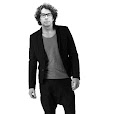An Andalusian dog,
by Luis Buñuel, is a title that marked a before and after in the history of
cinema. Let's go back no less than until 1929, year in which the creators were
for the effort to break with conventional rationality and impose a logic
subverted. There are many things that are widely known about An Andalusian dog. That it was possible
to realize thanks to the 25,000 pesetas that the mother of Luis Buñuel
contributed with; that the script was co-written by the director and by
Salvador Dalí; that Federico García Lorca felt alluded to by the title of the
film, to which Buñuel always responded by saying that he did not refer to the poet
from Granada but that he corresponded to that of a book of his own poems; that
the plot development of the film does not follow a logical order, in
correspondence with the essential postulates of surrealism; that the soundtrack
is composed of Argentine tangos and music by Richard Wagner ... But, perhaps,
there is an element that seems to be only to make a brutal impact on the viewer
but that makes full sense according to the characteristics of An Andalusian dog. Of course, we are
talking about the first sequence, in which a razor cuts the eye of the
protagonist. Apart from the sadistic component that the image shows, as a
reflection of the destructive instincts that populate our unconscious, there is
a second intention: to announce that An
Andalusian Dog aims to take down our
conventional gaze and discover a new form of film narration.
But, first of all, to be fair, An Andalusian Dog is not the first title that introduced the
avant-garde into cinema. This honor corresponds to La Coquille et le Clergyman by the director Germaine Dulac, which
was held a year earlier, in 1928. We cannot deny that the fact that Germaine
Dulac was a woman meant that this background does not have the recognition it
deserves. But it is no less true that Buñuel did achieve something that the
short film by Dulac did not; while in La
Coquille et le Clergyman the composition of the images was very important
and that caused the film to have a certain static character, Buñuel ( thanks,
especially to having been assistant director in several titles of Jean Epstein
and Jacques Feyder) was able to give the film a dynamic character with an
extremely intelligent use of editing and a masterful use of the cinematographic
space (and flagrant violations of it) , which gave the short film an agile
rhythm that, later, would be the hallmark of the Aragonese style.
An Andalusian dog
(Un chien andalou) does not have any dog nor any Andalusian. It is believed
that the title is a surrealist "homage" to Federico García Lorca, who
was already at odds with the directors. The poet of course took it for granted.
Buñuel was 29 years old (it was his first movie) and Dalí 25. They both decided
to make an experimental cinema, emerged as directly as possible from the
subconscious. Buñuel said: "We wrote the script in less than a week,
following a very simple rule: not to accept an idea or image that could give
rise to a rational, psychological or cultural explanation."
Indeed, everything in the film escapes logic. The script,
written in six days, captured the first images that came to mind to the two
young men, among them the famous razor in the eye. Just in case, at the premiere, Buñuel stayed
behind the stage armed with stones, smelling a lynching. The case is that An Andalusian dog became an
indisputable cult film that marked thousands of filmmakers and other subsequent
artists, from Magritte or Man Ray to David Lynch or the Pixies.
Imagine the bewilderment of the people when you saw the
movie at the premiere. Not only because of the little knife scene ... Sex,
violence and sacrilege are in almost all frames: putrefying Donkeys (a possible
reference to "Platero and I", which both artists hated), hands with
ants (a reference in Dalí's work), bishops dragged as a criticism to Catholicism.
The film aimed to bring the dreams that these artists had to
a level of expression, so the images do not have much connection in terms of
history, but in each of them you can highlight the elements of strangeness,
irrationality, elements of a imaginary world where there is no sense, but that
reflects a very real feeling, such as sexual desire, when a woman's breasts are
seized, there is a rebellion to express her beliefs.


No comments:
Post a Comment